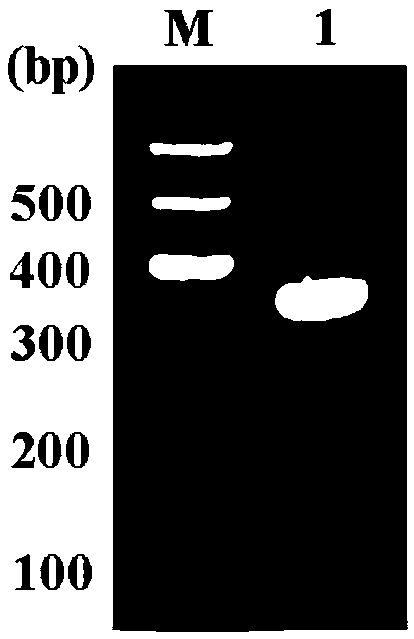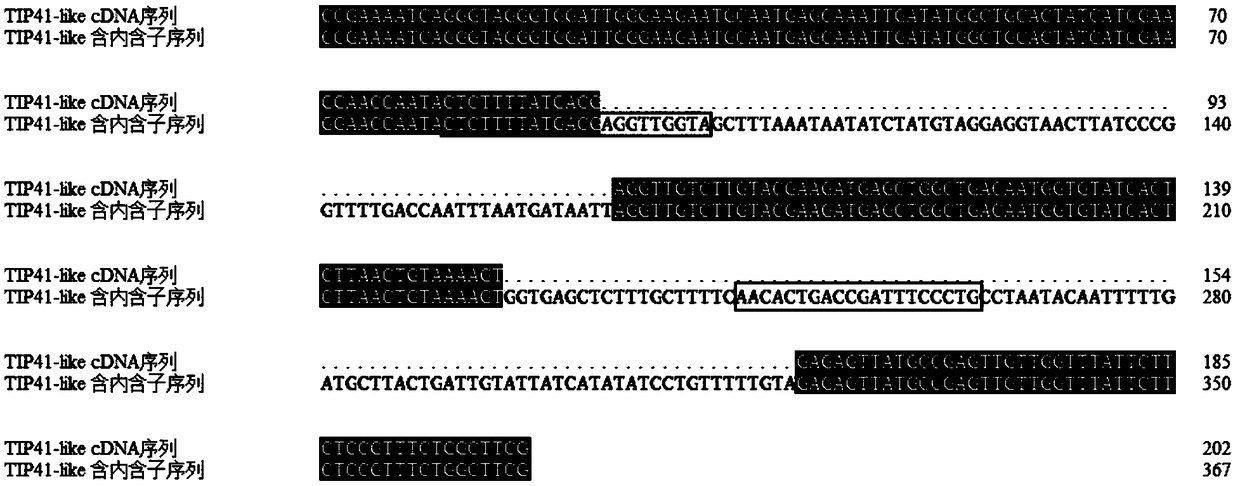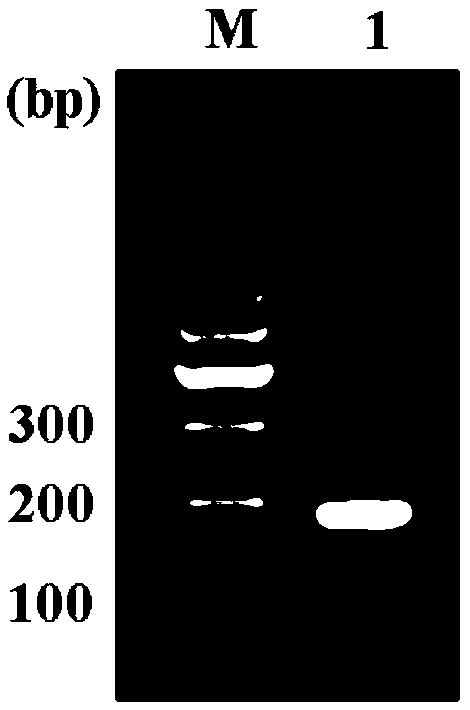Method for fast detecting genome DNA residues in total RNA sample
A sample and genome technology, applied in the biological field, can solve the problems of genomic DNA contamination, whether the DNA has been removed completely cannot be known, and the quality of cDNA cannot be predicted.
- Summary
- Abstract
- Description
- Claims
- Application Information
AI Technical Summary
Problems solved by technology
Method used
Image
Examples
Embodiment 1
[0052] Example 1 Genomic DNA Residual Detection in Total RNA Samples Extracted by Different Kits
[0053] Including the following steps:
[0054] (1) Total RNA sample extraction
[0055] Three kinds of RNA extraction kits produced by different companies were selected, and the total RNA was extracted from the leaves of 6 plants according to the instructions of the respective kits. The extracted total RNA samples were detected by 1.2% agarose gel electrophoresis and QuawellQ3000 detection, the results are shown in Figure 4 ,From Figure 4 It can be seen that the extracted 18 total RNA samples have good integrity and no protein contamination. Moreover, it is impossible to judge with the naked eye whether there is genomic DNA contamination in the RNA sample only from the figure.
[0056] (2) Detection of genomic DNA residues in RNA samples
[0057] Use genomic DNA residual detection primers (LDRG-F / LDRG-R) to perform PCR amplification on the extracted RNA, PCR reaction syste...
Embodiment 2
[0060] Example 2 Genomic DNA residue detection in cDNA samples
[0061] Including the following steps:
[0062] (1) Total RNA sample extraction
[0063] With embodiment 1.
[0064] (2) First strand cDNA synthesis
[0065] Using two first-strand cDNA synthesis kits from different companies (labeled as I and II respectively; I does not contain genomic DNA removal steps, and II contains genomic DNA removal steps), respectively refer to the instructions of the respective kits, and analyze 18 total RNAs. Samples undergo first-strand cDNA synthesis.
[0066] (3) Detection of genomic DNA residues in cDNA samples
[0067] The obtained cDNA was used as a template, and the genomic DNA residue detection primers (LDRG-F / LDRG-R) were used for PCR amplification respectively. The PCR reaction system was 20 μL: template cDNA (about 1 ng / μL) 2 μL, LDRG-F Primer 0.5 μL, LDRG-RPrimer 0.5 μL, 2×Taq PCR Magic Mix 10 μL, ddH 2 O 7 μL.
[0068] The PCR reaction procedure is the same as in Exa...
PUM
 Login to View More
Login to View More Abstract
Description
Claims
Application Information
 Login to View More
Login to View More - R&D
- Intellectual Property
- Life Sciences
- Materials
- Tech Scout
- Unparalleled Data Quality
- Higher Quality Content
- 60% Fewer Hallucinations
Browse by: Latest US Patents, China's latest patents, Technical Efficacy Thesaurus, Application Domain, Technology Topic, Popular Technical Reports.
© 2025 PatSnap. All rights reserved.Legal|Privacy policy|Modern Slavery Act Transparency Statement|Sitemap|About US| Contact US: help@patsnap.com



